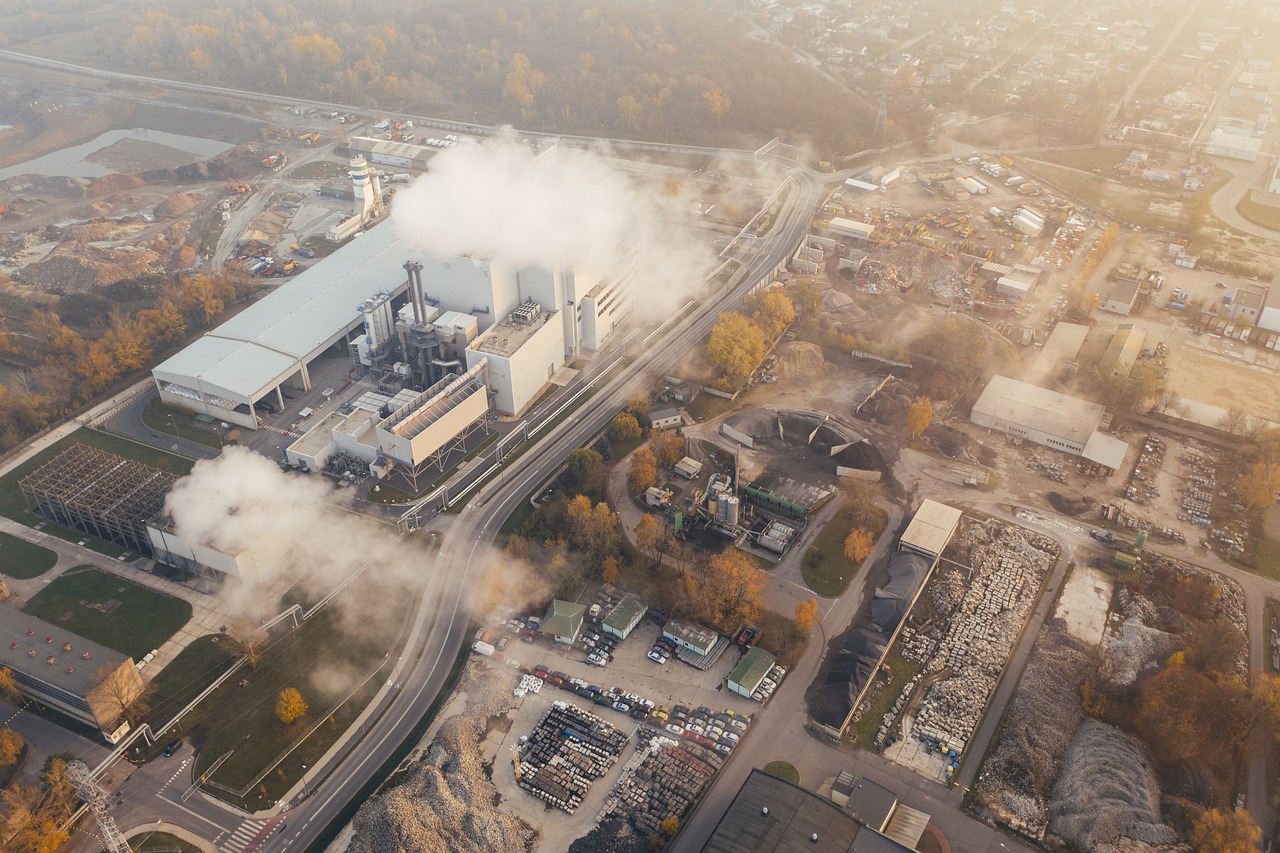Net Zero vs. Carbon Neutral

In recent years, the phrases “net zero” and “carbon neutral” have become buzzwords in the climate change and sustainability discussion. Governments, businesses, and individuals are increasingly encouraged to reduce their carbon footprint and instead adopt green practices to minimize their environmental impact.
Understanding the differences between net zero carbon emissions and carbon neutral is crucial to developing effective strategies for tackling climate change.
Learning the critical differences between net zero and carbon neutral is helpful. We will examine their significance in the context of sustainability and the challenges and strategies associated with achieving these goals. We will also look at how different industries are adopting these ambitious targets, the role of governments and businesses in promoting sustainability, and how these concepts shape the global fight against climate change.
Defining net zero emissions
Net zero emissions, often referred to as “net zero,” is a concept that refers to the balance between the total amount of greenhouse gas (GHG) emissions produced and the amount removed from the atmosphere.
Achieving net zero emissions means that a country, company, or individual is effectively contributing no additional GHG emissions to the atmosphere than they produce. This is a crucial step in the fight against climate change, as rising levels of atmospheric GHGs are a primary driver of global warming and the resulting environmental impacts which rising temperatures cause.
To help mitigate these effects, the Intergovernmental Panel on Climate Change (IPCC) has called for global emissions to halve by 2030
Defining carbon neutrality
The definition of carbon neutrality is relatively straightforward. It is achieving a state where the total amount of Carbon Dioxide (CO2) emissions produced is offset by an equivalent amount of CO2 removed from the atmosphere or stopped from being released.
Carbon neutrality can be accomplished by reducing emissions, increasing renewable energy sources, and investing in carbon offset projects that counterbalance the remaining emissions. This means that the net amount of carbon emissions associated with a specific activity, organization, or individual is zero. The goal here is to reduce the climate impact to zero. Neutrality is typically achieved by measuring and reducing one’s carbon footprint and compensating for any remaining emissions by purchasing carbon credits and supporting initiatives that reduce or even remove GHG emissions elsewhere.
On the surface, carbon neutrality is a similar process to net zero. However, there are some differences between them.
What Are The Key Differences Between Net Zero and Carbon Neutral
Both net zero and carbon neutral revolve around balancing emissions and removals or offsets, but the two concepts have some key differences.
Net zero targets all greenhouse gas emissions, whereas the main difference is that carbon neutrality primarily focuses on just CO2 emissions. This distinction is essential since other GHGs, including nitrous oxide and methane, can also contribute to climate change. In short, net zero is a more comprehensive and ambitious approach to tackling global warming when compared to just carbon neutrality.
Emissions reduction vs. offsetting: Achieving net zero requires a greater focus on reducing emissions at their source, while carbon neutrality allows for more reliance on offsetting measures. While both approaches highlight the importance of lowering emissions, net zero emphasizes the need for a more systemic shift toward a low-carbon economy.
Net zero emissions targets are typically set decades into the future. Still, carbon neutrality goals can be set for shorter time frames, making them suitable for companies and individuals looking to demonstrate their commitment to sustainability in the short term.
Net Zero and Carbon Neutral in Sustainability
Both net zero and carbon neutral play significant roles in promoting sustainability and addressing climate change. Governments, businesses, and individuals acknowledge the importance of reducing their greenhouse gas emissions and taking steps towards a more environmentally responsible future by aiming for net zero emissions or carbon neutrality.
Net zero targets, in particular, have gained traction as a crucial component of global climate change mitigation efforts. The Paris Agreement, adopted in 2015, calls for limiting global temperature increases to below 2°C above pre-industrial levels to limit the increase to 1.5°C. Achieving this goal requires that greenhouse gas emissions peak before 2025 and decline by 43% by 2030.
While less comprehensive than net zero, carbon neutrality still significantly reduces greenhouse gas emissions and promotes greenhouse gas emissions and promoting sustainability. By offsetting their emissions, businesses and individuals can support projects that contribute to the global transition to a low-carbon economy and demonstrate their commitment to environmental stewardship.
Achieving Net Zero Emissions
Reaching net zero emissions requires a combination of different strategies alongside brand-new and innovative technologies. Some of the critical approaches to achieving net zero are:
Decarbonizing the energy sector: Transitioning from fossil fuel-based energy sources to renewable options, such as solar and wind power, is essential for reducing greenhouse gas emissions. Additionally, improving energy efficiency and investing in energy storage technologies can reduce the overall demand for energy and make renewable sources more reliable.
Electrifying transportation: Shifting towards electric vehicles (EVs) and public transportation options can significantly reduce emissions from the transportation sector. This transformation requires investments in EV infrastructure, such as charging stations, and policy incentives for manufacturers and consumers.
Implementing carbon capture and storage (CCS) technologies: CCS technologies capture CO2 emissions from industrial outputs to store them underground, ultimately preventing them from entering the atmosphere. While CCS is still an emerging field, it has the potential to be one mechanism in achieving net zero emissions for industries with hard-to-abate emissions. Other even simpler options for carbon removal include planting more trees and forests since these act as carbon sinks.
Promoting circular economy principles: Embracing the circular economy, which has a goal of reducing excess waste and helping to maximize resource efficiency, can help lower emissions across various sectors, from manufacturing to agriculture.
Businesses can adopt science based practices to achieve net zero: For example, The SBTi’s (Science-Based Targets Initiative) Corporate Net-Zero Standard is a framework for corporate net-zero target setting. This scheme uses climate science as its basis. This helps businesses reduce their own emissions to help hit climate change targets.
Ensuring that set targets are met: For example governments and businesses need to follow the guidance from the United Nations and the outcomes from conferences such as the COP26 in 2021.
Achieving net zero emissions is a challenge. Some key obstacles include:
Technological barriers: Many technologies necessary for reaching net zero, such as advanced CCS or new materials for energy storage, are still in the early stages of development and require significant investment to scale up.
Economic and social considerations: Transitioning to a low-carbon economy requires a shift in how we produce and consume goods and services, which can have significant economic and social implications, such as workers losing their jobs due to changing working practices and higher costs for certain products.
Political and regulatory issues: Achieving net zero emissions requires political will and cooperation among governments, businesses, and individuals. Implementing the necessary policies and regulations can be challenging, particularly in the face of competing interests and priorities.
Achieving Carbon Neutrality
Attaining carbon neutrality involves reducing emissions at their source and investing in carbon offset projects. Some key strategies for achieving carbon neutrality include:
Reducing energy use: Improving energy efficiency in buildings, appliances, and industrial processes can significantly lower CO2 emissions. For instance, energy consumption reductions can be achieved through better insulation, energy-efficient lighting, and smart energy management systems.
Using renewable energy: Switching to clean energy sources, such as solar, wind, and hydro, can help reduce emissions from electricity generation. This move may involve installing solar panels, purchasing green energy credits, or supporting the development of new renewable energy projects.
Promoting public/sustainable transport: People and businesses need to get behind climate action initiatives such as encouraging public transport use, carpooling, cycling, and walking to help reduce emissions from the transportation sector. Investing in electric vehicles and charging infrastructure can also support the transition to low-emission transportation options.
Offsetting emissions: After implementing measures to reduce emissions, residual emissions may remain. At this point if it is economically viable, carbon neutrality can be achieved by purchasing carbon credits to offset any remaining emissions. These credits support projects that remove or prevent CO2 emissions, such as reforestation or renewable energy initiatives.
Challenges for Carbon Neutrality:
Measuring and tracking emissions: Accurately tracking an organization’s or individual’s carbon footprint can be complex, particularly when determining indirect emissions from supply chains and other sources. Carbon accounting can be challenging and it can be difficult to ascertain whether an organization is truly carbon negative.
Quality of carbon offset schemes: Not all offset projects are created equal, and some may be less effective at reducing emissions than others. Ensuring the quality and credibility of offset projects is crucial for achieving genuine carbon neutrality and avoiding tokenism.
Balancing cost and environmental impact: While offsetting emissions can be an effective way to achieve carbon neutrality, it’s essential to balance the cost of these investments with the need for meaningful emissions reductions at the source.
Greenwashing: often companies and organizations may appear to adopt green strategies such as offsetting but often their business practices remain unchanged. Often an organization will only make changes to their business practices if either governments or consumers force through the change.
Comparing carbon neutral and net zero goals across industries
Different industries face challenges and opportunities in pursuing net zero or carbon-neutral targets. Here are some examples of how:
Energy: Some major energy companies have announced net zero or carbon neutral targets, aiming to shift their portfolios from fossil fuels to renewable energy sources. This transition often involves investments in solar, wind, and other clean energy projects and efforts to improve energy efficiency and reduce operational emissions.
Transportation: The automotive industry increasingly focuses on electric vehicles to pursue net zero and carbon neutral goals. On the other hand, airlines face significant challenges in reducing emissions and often rely on carbon offsetting to achieve carbon neutrality.
Manufacturing: The manufacturing sector faces diverse challenges in reducing emissions, depending on the specific industry and processes involved. Some common strategies for achieving net zero or carbon neutral targets in manufacturing include improving energy efficiency, adopting circular economy principles, and offsetting. Manufacturing can also include climate change metrics in their value chain analysis
Retail: Bricks-and-mortar retail businesses can pursue net zero or carbon neutral targets by reducing emissions through energy-efficient lighting and heating systems and promoting sustainable sourcing and transportation practices. Online retailers can work towards lowering excess packaging, such as plastic, and improve shipping and handling, for instance, shipping orders in one package instead of separately.
The Role of Governments and Businesses
Both governments and businesses play critical roles in driving a low-carbon economy and promoting sustainability. Governments can set ambitious climate targets, such as net zero emissions goals, and implement policies and regulations encouraging emissions reductions across various sectors.
Examples of government actions include:
- Implementing carbon pricing mechanisms.
- Introducing legislation and laws to tackle green issues and climate change.
- Providing incentives for renewable energy and energy efficiency.
- Supporting research and development in clean technologies.
Businesses can also take significant steps towards promoting sustainability by setting their own net zero or carbon neutral targets and implementing strategies to reduce their emissions.
Initiatives can involve investing in renewable energy, improving energy efficiency, and adopting more sustainable business practices. By moving towards sustainability, businesses can do two things. Firstly they can reduce their environmental impact, but secondly, they can bolster their reputation, attract customers and investors, and drive innovation in their industries.
Understanding net zero and carbon neutral differences helps develop effective strategies to combat climate change and promote sustainability. While both concepts aim to balance emissions with removals or offsets, net zero represents a more comprehensive and ambitious approach, encompassing all greenhouse gases and emphasizing the need for change.
Achieving net zero or carbon neutral targets requires deploying new technologies, forward-thinking policies, and collaboration between governments worldwide, businesses, and individuals. By understanding the nuances and their implications for sustainability, we can better inform our actions to address the urgent challenge of climate change.
How the Plastic Collective Helps
Plastic manufacture and use is a significant contributor to climate change since the manufacture of traditional plastics uses fossil fuels. Once used, plastic is often discarded in the environment, in landfills, or burnt at incinerators which also causes greenhouse gases to be emitted. Greenpeace states that over two tonnes of CO2 is released into the atmosphere for every tonne of plastic burned.
The Plastic Collective can help businesses with plastic audits so that they can work to achieve plastic net zero within their organization. Sign-up for our innovative plastic offset program to help your business become plastic-neutral. This scheme is similar to a carbon offsetting scheme in its function. If your business is working towards net zero or carbon zero targets, then one aspect that can help is focusing on reducing plastic from your workflow and business processes. Learn more about becoming plastic-neutral at the Plastic Collective

